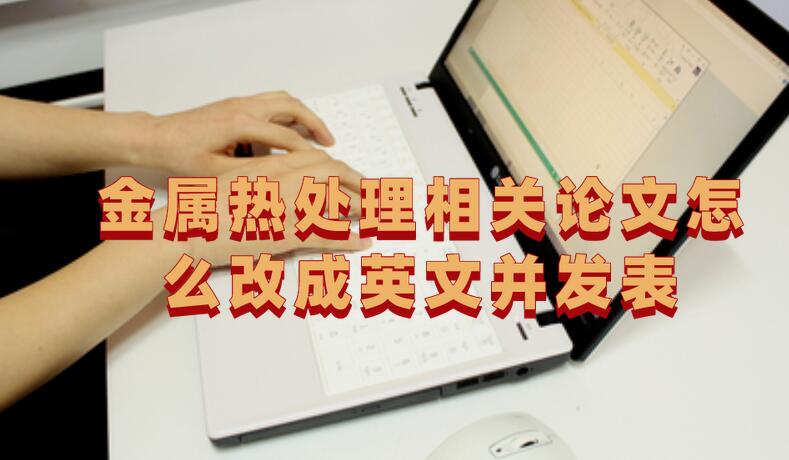期刊VIP學(xué)術(shù)指導(dǎo) 符合學(xué)術(shù)規(guī)范和道德
保障品質(zhì) 保證專業(yè),沒有后顧之憂
期刊VIP學(xué)術(shù)指導(dǎo) 符合學(xué)術(shù)規(guī)范和道德
保障品質(zhì) 保證專業(yè),沒有后顧之憂
所屬分類:英文論文及知識時(shí)間:瀏覽:次
金屬熱處理相關(guān)論文怎么改成英文并發(fā)表?很多國內(nèi)的學(xué)者發(fā)表英文論文都是通過將中文稿件翻譯成英文稿件后再投稿,但是要注意一些問題。

在撰寫中文學(xué)術(shù)論文時(shí),我們經(jīng)常嵌入專業(yè)領(lǐng)域的專門術(shù)語,這些專業(yè)名詞在轉(zhuǎn)換成英文時(shí),常常面臨著多種翻譯選項(xiàng),甚至可能出現(xiàn)沒有直接對等詞的情況。舉例來說,某個(gè)中文術(shù)語在英文中可能不存在,此時(shí),翻譯的工作就需要通過增加細(xì)節(jié)描述來替代,以便于準(zhǔn)確傳達(dá)原本的意圖。在此過程中,譯者必須依據(jù)文章的具體內(nèi)容和所涉及學(xué)科的背景知識,挑選最貼近原意的表達(dá)方式。這樣做是為了確保英文讀者可以無障礙地理解文中的觀點(diǎn)和論據(jù)。
在格式上,中文學(xué)術(shù)文章和英文學(xué)術(shù)文章之間也有著顯著的差異,翻譯的時(shí)候,譯者必須要對目的學(xué)科所采納的引用風(fēng)格,如APA或MLA等,有足夠的了解,并在翻譯的同時(shí),適配這些特定的引用格式。此外,中英文在數(shù)字表示和單位使用上也不盡相同。譯者應(yīng)考慮到目標(biāo)讀者的文化習(xí)慣,選擇他們熟悉的數(shù)字表達(dá)形式和單位符號。至于文體和語調(diào),中文論文通常偏好正式且客觀的語言風(fēng)格,而英文論文則更強(qiáng)調(diào)準(zhǔn)確性、清晰度,同時(shí)還要滿足學(xué)術(shù)寫作的規(guī)范。
金屬熱處理范文參考:
Analysis and prediction of leak detection in the low-pressure heat treatment of metal equipment
The low-pressure heat treatment of metals enables the continuous improvement of the mechanical and plastic properties of products, such as hardness, abrasion resistance, etc. A significant problem related to the operation of vacuum furnaces for heat treatment is that they become unsealed during operation, resulting from the degradation of seals or the thermal expansion of the construction materials. Therefore, research was undertaken to develop a prediction model for detecting leaks in vacuum furnaces, the use of which will reduce the risk of degradation in the charge being processed. Unique experimental studies were carried out to detect leakages in a vacuum pit furnace, simulated using the ENV 116 reference slot. As a consequence, a prediction model for the detection of leaks in vacuum furnaces- which are used in the heat treatment of metals- was designed, using an artificial neural network. (93% for MLP 15-10-1) was developed. The model was implemented in a predictive maintenance system, in a real production company, as an element in the monitoring of the operation of vacuum furnaces.
論文一般是學(xué)術(shù)性的,最好是使用專業(yè)的語言和用語習(xí)慣,因此,采用正式的語言和專業(yè)術(shù)語是至關(guān)重要的。如果翻譯過程中摻雜了太多口語化的表達(dá),可能會讓整篇文章的專業(yè)形象大打折扣。在翻譯時(shí),必須小心翼翼地選擇用詞,確保在需要專業(yè)術(shù)語的地方,絕不使用口語。
另外,我們要明確翻譯和編譯的區(qū)別,翻譯的要求是精確和專業(yè),而編譯則側(cè)重于全面性,追求的是信息的完整性而非絕對的精準(zhǔn)度。因此,當(dāng)學(xué)術(shù)論文被翻譯成英文時(shí),準(zhǔn)確度是首要考慮的。
推薦閱讀:英文期刊不交審稿費(fèi)會怎樣
如果您現(xiàn)在遇到期刊選擇、論文內(nèi)容改善、論文投稿周期長、難錄用、多次退修、多次被拒等問題,可以告訴學(xué)術(shù)顧問,解答疑問同時(shí)給出解決方案 。